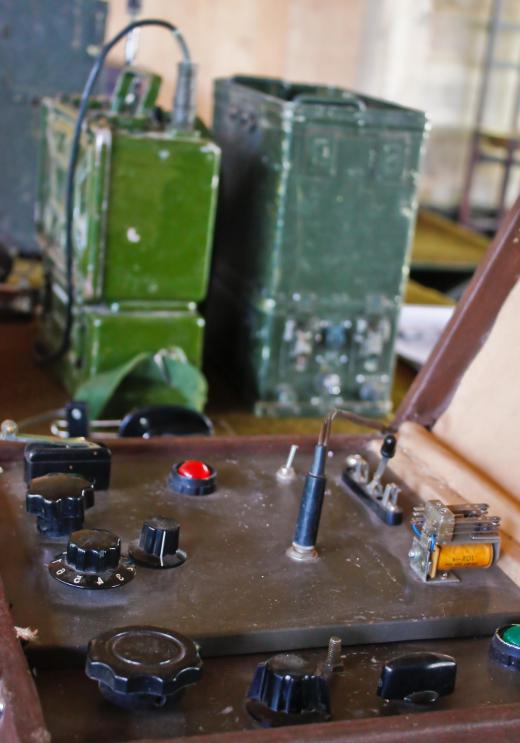How are Radio Waves Blocked?
Radio waves are a type of electromagnetic radiation and the primary mode of global communication. In addition to radio broadcasts, other applications such as television sets, cell phones and radio-controlled cars all use forms of the technology. The challenge with this form of communication is the fact that different naturally-occurring phenomena like mountains, along with certain materials such as copper and aluminum, can block the waves.
As a simple form of electromagnetic radiation, radio waves are not harmful to humans and move from location to location with limited impact. The benefits and drawbacks of blocking radio waves come in the form of either intentional or accidental events. A military may choose to block radio waves of an enemy for instance. Other situations result in the natural interruption of a broadcast.

To understand what blocks radio waves, the fundamental theory behind the technology must be illustrated. A radio signal is sent from one location via a device known as a transmission antenna, basically creating an electromagnetic field projected from the unit to the broader world. Each wave moves out in every direction until they hit a receiving antenna, a device designed to pick up the wave.

Transmittance is the theory that makes radio waves travel through materials without being stopped. Either a material is a good or bad transmitter of the radiation. An example of good transmission material is the lower atmosphere of the Earth, which allows radiation to travel for long distances. The same cannot be said for the upper layer of the atmosphere, however, which is known as the ionosphere. This contains ionized radiation from the sun, which reflects the radio waves back towards the lower atmosphere.

The attenuation coefficient is the level by which a material will block or interfere with radio waves. This coefficient depends heavily on the thickness and composition of the material. Cardboard, paper, many plastics, water, and glass are all substances with very low attenuation coefficients. Wood, brick, and cement have a limited effect on radio waves. Metallic compounds, steel-reinforced concrete, and the Earth reflect signals, however, preventing radio waves from passing through.

One major consideration that determines if radio waves are blocked involves the concept of diffraction. This depends on the wavelength of the radiation and the size of the obstacle that it is attempting to penetrate. Low frequencies have a easier time passing over large objects such as hills, while higher frequencies work better with small obstacles such as rooftops. This can be very useful for blocking radio waves using the knife-edge diffraction method. If a wave does not have a line of sight over an object, a sharp edge can be created that causes the wave to be blocked and redirected to where the broadcast should go.
AS FEATURED ON:
AS FEATURED ON:















Discuss this Article
Post your comments